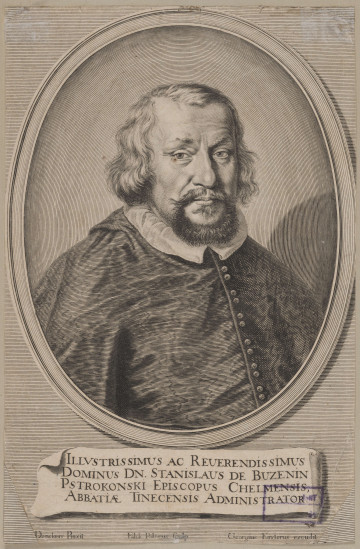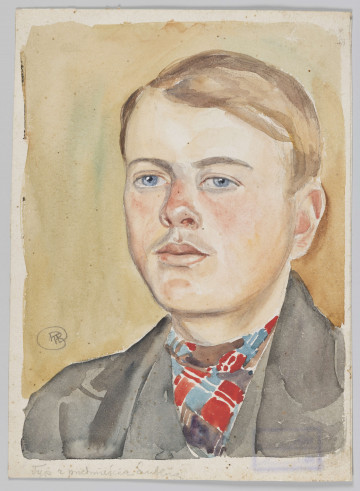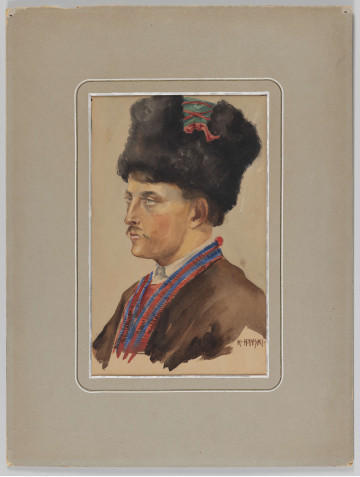
Portrait of Stanisław Pstrokoński
1645 — 1655
National Museum in Lublin
Part of the collection: Portrait
Counted among the most outstanding artists of the Young Poland period, Leon Wyczółkowski is one of the most eminent portraitists of the epoch, and portrait painting occupies a special place in his oeuvre. As early as in the 1880s, after completing his studies at the Academy of Fine Arts in Krakow and returning from Lviv to Warsaw, a type of portrait emerged in his painting which can be described as "drawing-room" referring to the intimate, sometimes narrative depiction of figures against the background of bourgeois interiors. These early academic compositions, created in accordance with the demand of the establishment of the time, brought Wyczółkowski popularity, at the same time giving an idea of his great talent. In later years Wyczółkowski created a peculiar gallery of portraits of personalities from the world of science, culture and art, who were often connected with the artist by close, friendly relations. Equally eagerly, in accordance with the Young Poland's fascination with folklore, he portrayed highlanders and peasants in folk costumes. He most often used pastels, almost completely abandoning the oil medium, explaining that he was allergic to the smell of paint. The choice of pastel was also justified by the artist's temperament; the technique, combining great freedom of creation with the speed of the process, was definitely closer to his nature than oil painting. Wyczółkowski's portraits are characterised by insightful psychological features, which the artist usually combined with realistic depiction of the figure, technical perfection and refined, subdued colour palette. The representative character of the portrait of Edward Chmielarczyk, a Krakow lawyer, painted in pastel and tempera, is emphasised by the static pose and restrained calm of the portrayed, his serious, concentrated, slightly thoughtful expression and his gaze directed towards the viewer. Wyczółkowski concentrates on the detailed elaboration of the man's head, modelled by the light coming from the side, which brings his face out of the shade. The background of the composition is worth mentioning - it is made of muted green fabric with a decorative ornament, which dynamizes the composition, probably coming from the artist's rich collection of Eastern carpets and kilims.
Anna Hałata
Author / creator
Dimensions
cały obiekt: height: 74 cm, width: 65 cm
Object type
drawing
Technique
pastel
Material
paper, pastel
Creation time / dating
Creation / finding place
Owner
The National Museum in Lublin
Identification number
Location / status

1645 — 1655
National Museum in Lublin

1901 — 1925
National Museum in Lublin

1901 — 1925
National Museum in Lublin
DISCOVER this TOPIC
Museum of King Jan III's Palace at Wilanów
DISCOVER this PATH
Educational path